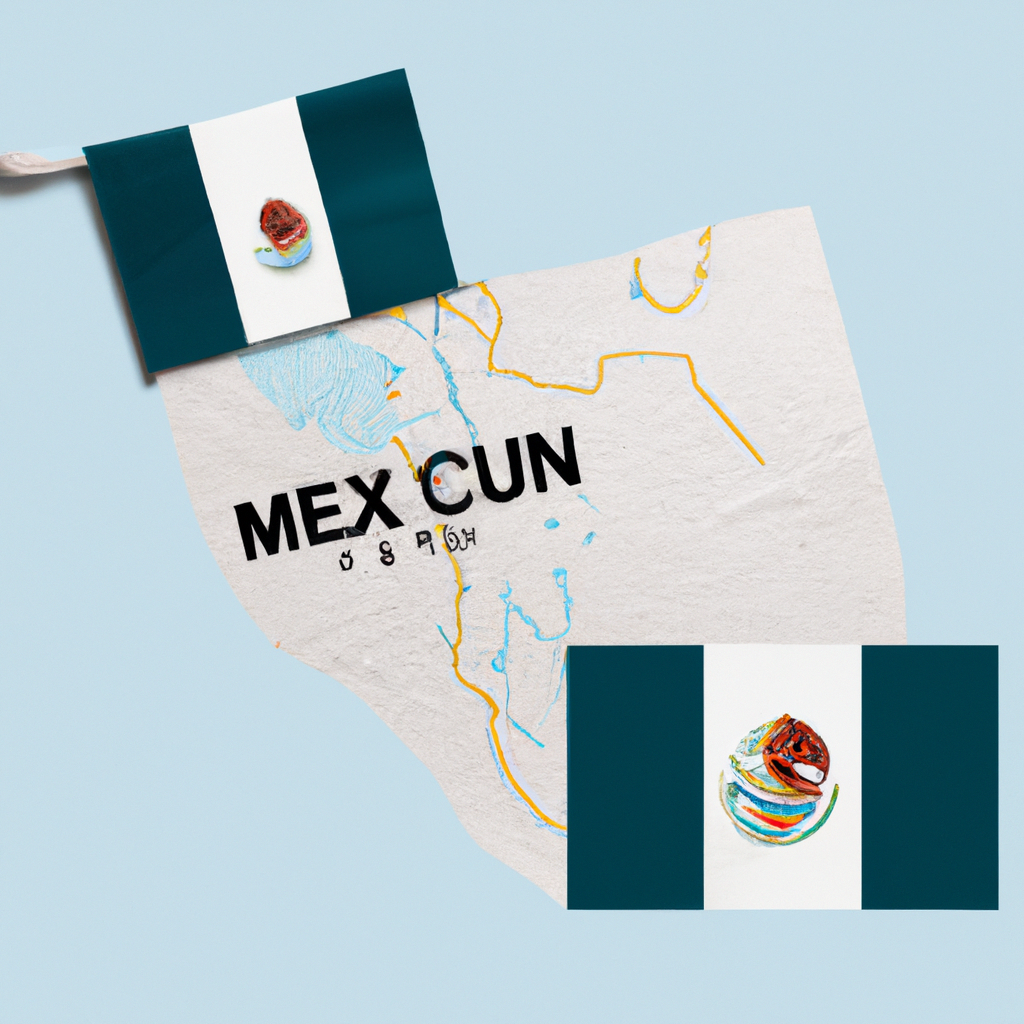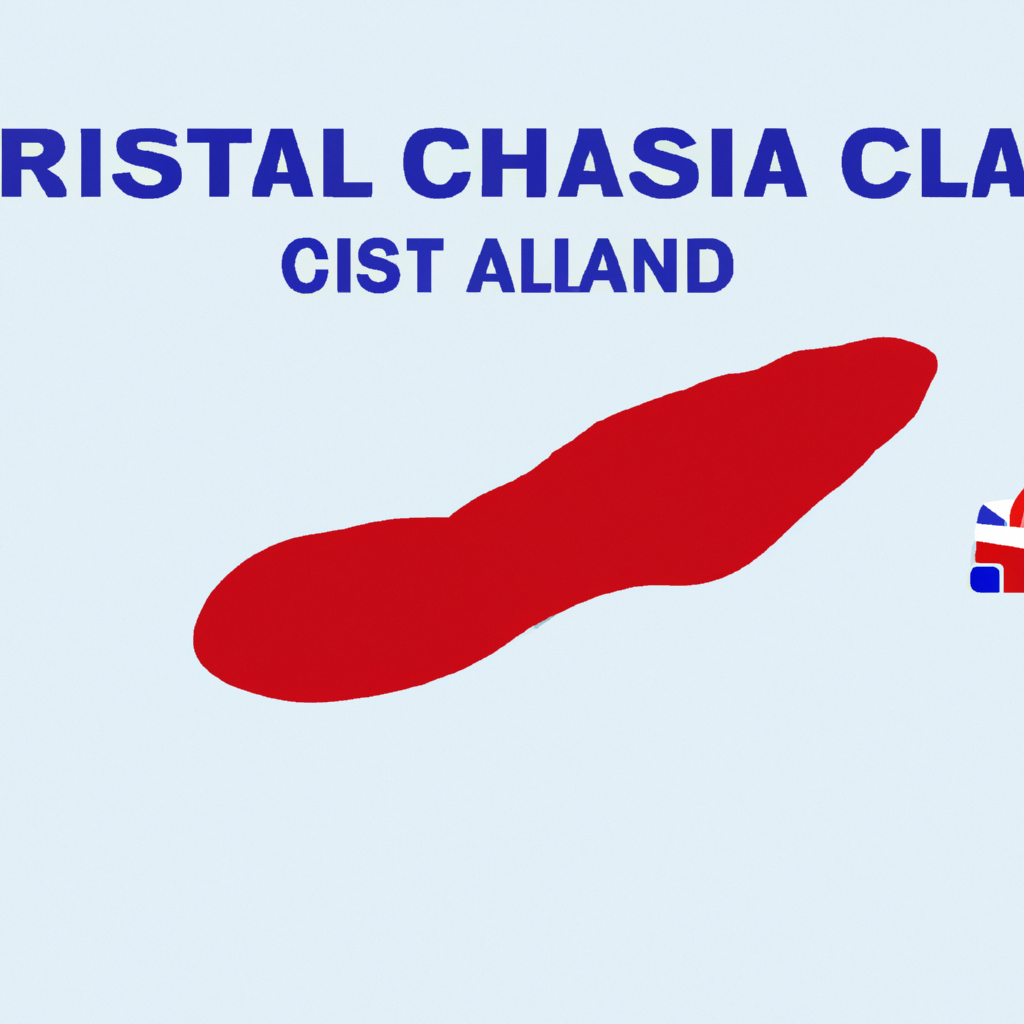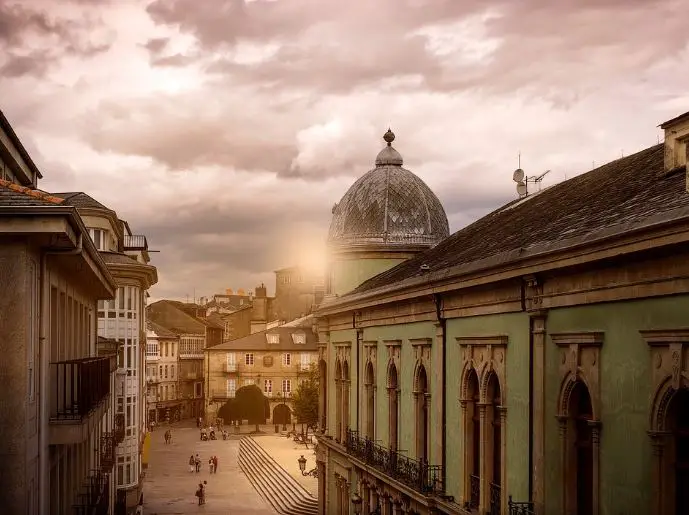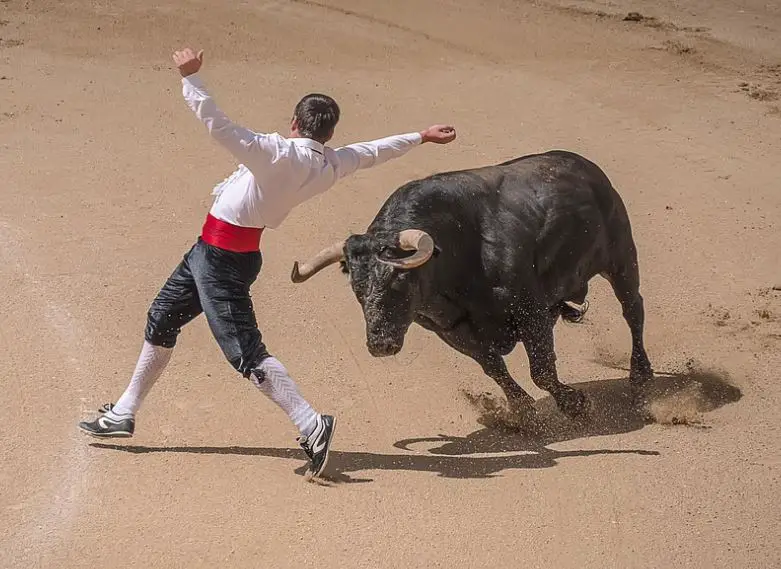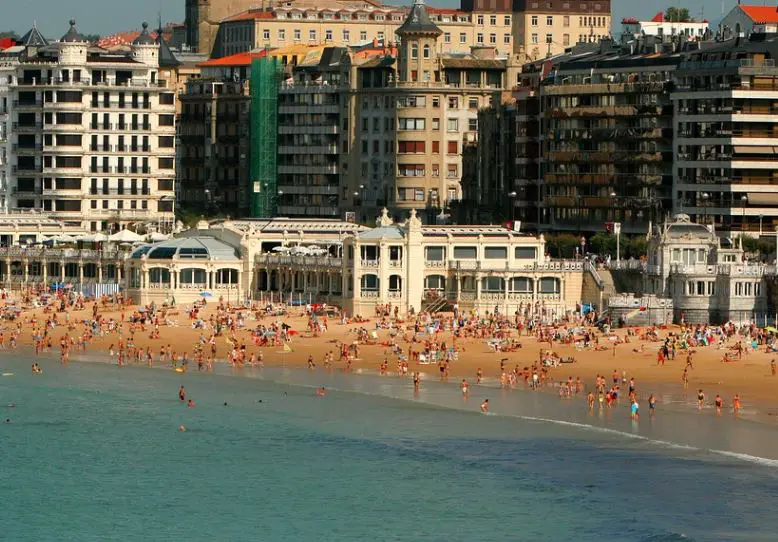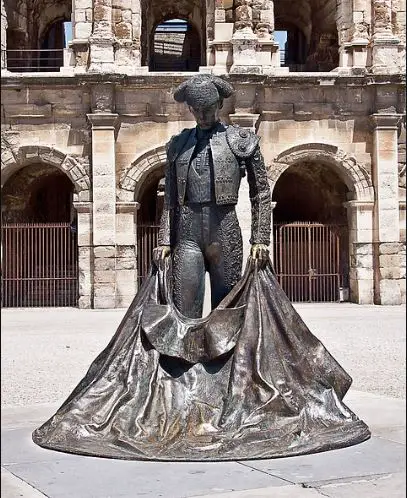Granada, Spain: Interesting Facts,History, Things to do,Why to Visit
Post ByAdequate Travel
Granada, Spain, is a picturesque destination that has something to offer for everyone. From the vibrant city life to the serene beauty of the Sierra Nevada mountains, it has it all. It is rich in culture, tradition, and history. Interesting facts abound about the city and its people. You can explore the historic sites, sample the unique cuisine, and partake in many activities and attractions. Come and experience all that Granada has to offer. You'll discover that it's a place with something for everyone and worth every moment of your time.
Spain is a country located on the Iberian Peninsula in southwestern Europe. It has a rich history dating back to prehistoric times and has been influenced by various civilizations including the Romans, Moors, and Christians. Spain became a unified kingdom in the 15th century and later went on to become a major colonial power. However, the country faced political instability and social unrest in the 20th century, including a civil war and a dictatorship under Francisco Franco. Spain transitioned to a constitutional monarchy in the late 1970s and has since become a member of the European Union. Today, Spain is known for its vibrant culture, delicious cuisine, and diverse landscapes, including stunning beaches, mountains, and historic cities like Madrid and Barcelona. The country's economy is based on a mix of industries, with tourism, manufacturing, and services playing significant roles.Uncover the best spain attractions that will leave you awe-inspired and wanting more.
Interesting facts
1. Cultural Diversity
Spain is known for its rich and diverse cultural heritage. The country has been influenced by various civilizations throughout history, including the Romans, Moors, and Christians. This diverse mix of cultures is evident in Spain's architecture, music, dance, and gastronomy.
Example: The city of Granada is a perfect example of the cultural diversity in Spain. It showcases Islamic architecture in the Alhambra, Catholic influence in the Cathedral, and traditional flamenco music and dance performances.
2. Siesta Tradition
The siesta, or afternoon nap, is a distinct cultural practice in Spain. It consists of taking a break during the hottest part of the day, usually between 2 pm and 5 pm. It allows people to rest, recharge, and escape the heat during the summer months.
Example: In many cities and towns across Spain, you will notice that shops and businesses close during the siesta hours. People often take this time to relax, have a family meal, or enjoy a leisurely walk before returning to work or other activities in the cooler evening hours.
3. Flamenco
Flamenco is a traditional Spanish art form that originated in the Andalusian region. It combines passionate singing, guitar playing, and vigorous dance movements. Flamenco is not only a popular performance art but also a way for people to express their emotions and tell stories.
Example: The Triana neighborhood in Seville is well-known for its flamenco culture. It is home to many tablaos (flamenco venues) where both locals and tourists can experience the intense and captivating performances.
4. Bullfighting
While controversial and declining in popularity, bullfighting is deeply rooted in Spanish tradition and history. It is considered both an art form and a sport, with its origins dating back several centuries.
Example: The Plaza de Toros de Las Ventas in Madrid is one of the most important bullrings in Spain. It hosts some of the prestigious bullfighting events, attracting both enthusiasts and curious visitors who want to understand the cultural significance of this practice.
5. Mediterranean Cuisine
Spanish cuisine is renowned worldwide for its delicious and diverse offerings. Each region in Spain has its own specialties, but overall, the country is known for its use of fresh and high-quality ingredients, such as olive oil, seafood, cured meats, and vegetables.
Example: Paella, a rice dish with various ingredients like meat, seafood, and vegetables, originates from Valencia. Tapas, small savory dishes that accompany drinks, are a popular culinary tradition in bars all over Spain.
From museums to parks,spain tourist attractions offer something for everyone, making it a versatile destination for all type of tourists.History of Spain
Spain has a rich and diverse history that spans thousands of years. Here are some key points and examples to give you an overview:
Prehistoric Era
During the prehistoric era, the Iberian Peninsula (modern-day Spain and Portugal) was inhabited by various indigenous tribes. One of the most significant groups were the Iberians, who left behind intricate cave paintings like the ones found in the Altamira Cave.
Roman Period
In 206 BC, the Romans conquered the Iberian Peninsula and established the province of Hispania. They introduced Latin, Christianity, and Roman architecture to the region. The aqueduct of Segovia and the Roman Theater of Mérida are notable examples of Roman influence that can still be seen today.
Moorish Rule
From the 8th to the 15th centuries, Spain was under Islamic rule by the Moors. They established the Umayyad Caliphate and left a lasting impact on Spain's culture and architecture. The Alhambra in Granada and the Great Mosque of Córdoba are remarkable examples of Moorish architecture in Spain.
Reconquista and Kingdoms
The Reconquista was a period of Christian reconquest in which various Christian kingdoms emerged, pushing the Moors south. The Kingdom of Castile, Kingdom of Aragon, and Kingdom of Navarre were among the most prominent. The marriage of Ferdinand of Aragon and Isabella of Castile united these kingdoms, laying the foundation for modern Spain.
Spanish Empire
In the 16th and 17th centuries, Spain established a vast empire, expanding its influence across the globe. Spanish explorers, such as Christopher Columbus and Ferdinand Magellan, discovered new lands and brought back riches. The conquest of the Americas led to immense wealth for Spain, though it also had negative effects such as the exploitation of indigenous populations.
Golden Age
The 16th and 17th centuries were also the Golden Age of Spanish literature and arts. Famous writers like Miguel de Cervantes (author of Don Quixote) and painters like Diego Velázquez and El Greco flourished during this period, leaving a lasting cultural legacy.
Spanish Civil War and Dictatorship
The 20th century was marked by significant turmoil, including the Spanish Civil War (1936-1939) and the subsequent dictatorship of Francisco Franco (1939-1975). The war pitted Republicans against Nationalists, with Franco's Nationalists emerging victorious. The Franco regime was characterized by a lack of political freedom and severe repression.
Transition to Democracy
After Franco's death in 1975, Spain transitioned to democracy. The country adopted a new constitution in 1978 that established Spain as a parliamentary constitutional monarchy. Spain has since become a member of the European Union and has experienced significant social and economic growth.
These are just some of the major historical events and periods in the history of Spain, showcasing its complex and diverse past.Exploring the rich heritage of historical sites in spain is a journey through time and culture.Famous Places in Spain
Spain is famous for its beautiful landmarks and historical sites. Here are some of the most renowned places in the country:
1. La Sagrada Familia
La Sagrada Familia is an iconic basilica located in Barcelona, designed by the renowned architect Antoni Gaudí. Its unique and intricate design attracts millions of visitors each year.
2. Alhambra
Alhambra is a stunning palace and fortress complex in Granada. Its exquisite Islamic architecture, intricate carvings, and beautiful gardens make it a popular tourist attraction.
3. Park Güell
Park Güell is a public park located on Carmel Hill in Barcelona, also designed by Antoni Gaudí. It showcases his distinctive architectural style with colorful mosaic works and fascinating structures.
4. Royal Palace of Madrid
The Royal Palace of Madrid is the official residence of the Spanish royal family. It is an impressive architectural masterpiece and serves as a venue for state ceremonies and official events.
5. The Prado Museum
The Prado Museum in Madrid is one of the most important art museums in the world. It houses an extensive collection of European art, including works by El Greco, Velázquez, and Goya.
6. Ibiza
Ibiza is a famous island in the Balearic archipelago known for its vibrant nightlife and beautiful beaches. It attracts tourists from around the world who come to enjoy its vibrant party scene and stunning coastal landscapes.
7. Plaza de España
Plaza de España is a grand square located in Seville. It features a beautiful mix of Renaissance and Moorish architectural styles and is a popular spot for locals and tourists to relax and enjoy the surroundings.
Discover some unique facts about spain that will leave you amaze and intrigue.Culture of Spain
Spain is known for its rich and diverse culture that has been shaped by its historical and geographical influences. Here are several aspects of Spanish culture:1. Language and Communication
The official language of Spain is Spanish, also known as Castilian. It is spoken by the majority of the population and is an essential part of the country's culture. However, Spain also has several regional languages, including Catalan, Galician, and Basque, which are spoken in specific areas.2. Food and Cuisine
Spanish cuisine is renowned worldwide and varies across regions. Some popular dishes include paella (a rice dish with seafood or meat), tapas (small plates of different foods), gazpacho (a cold tomato soup), and churros (deep-fried dough served with hot chocolate). Each region has its own specialties, showcasing the diversity of Spanish gastronomy.3. Festivals and Celebrations
Spain is famous for its vibrant festivals and celebrations, which often combine religious and cultural elements. One of the most well-known festivals is La Tomatina, held in Buñol, where participants engage in a massive tomato fight. Another popular event is Semana Santa (Holy Week), which features processions and religious events in various cities across Spain. The Running of the Bulls in Pamplona is also a widely recognized event.4. Art and Literature
Spain has a rich artistic and literary heritage, evident in its renowned painters, writers, and architects. Famous Spanish painters include Pablo Picasso, Salvador Dalí, and Diego Velázquez. Prominent literary figures from Spain include Miguel de Cervantes, Federico García Lorca, and Gabriel García Márquez. Spanish architecture is notable for its mix of Moorish, Gothic, and Renaissance styles.5. Music and Dance
Flamenco, a passionate and rhythmic style of music and dance, is deeply rooted in Spanish culture. It originated in the Andalusian region and is characterized by intense singing, guitar playing, and intricate footwork. Other traditional music genres in Spain include classical guitar, regional folk music, and zarzuela (a Spanish form of musical theater).These are just a few aspects of Spanish culture, which is incredibly diverse and varied across its different regions. Spain's unique customs, traditions, and heritage contribute to its fascinating cultural identity.Immerse yourself in the local culture by exploring spain's top-rated tourist attractions.Cuisine of Spain
The cuisine of Spain is rich and diverse, with each region having its own specialties and traditional dishes. Spaniards take pride in their food and consider it an important part of their culture. The country's cuisine is known for its use of fresh and high-quality ingredients, as well as the simplicity of its preparation techniques.Traditional Spanish Dishes:
1. Paella: This iconic Spanish dish originated in the region of Valencia and typically consists of rice, saffron, various meats or seafood, and vegetables.2. Tapas: These are small savory dishes that are meant to be shared. Popular tapas include patatas bravas (fried potatoes with a spicy tomato sauce), croquetas (breaded and fried croquettes filled with ingredients such as ham or cheese), and tortilla española (a thick omelette made with potatoes and onions).3. Gazpacho: This cold soup is made with fresh tomatoes, cucumbers, peppers, onions, garlic, olive oil, and bread. It is perfect for hot summer days.4. Jamón ibérico: Spain's famous cured ham is made from acorn-fed Iberian pigs. It has a distinct flavor and is often served thinly sliced.5. Pulpo a la gallega: This Galician specialty is boiled octopus served with paprika, olive oil, and salt. It is tender and flavorful.6. Pisto: A traditional vegetable dish similar to ratatouille, made with sautéed tomatoes, peppers, zucchini, and onions.Regional Variations:
1. Andalusian Cuisine: Known for its fried fish, such as pescaíto frito, and cold soups like salmorejo and ajo blanco.2. Basque Cuisine: Famous for its pintxos (the Basque variation of tapas), fresh seafood, and hearty stews like marmitako.3. Catalan Cuisine: Highlighted by dishes like pa amb tomàquet (bread rubbed with tomato and drizzled with olive oil), escalivada (roasted vegetables), and crema catalana (a creamy dessert similar to crème brûlée).4. Galician Cuisine: Known for its seafood, particularly octopus, as well as empanadas (savory pies) and caldo gallego (a hearty green soup).Influence from Other Cultures:
Spain's cuisine has also been influenced by various cultures throughout history. The Moors introduced ingredients such as rice, almonds, and saffron, which are prominently used in dishes like paella. The Romans brought olives and olive oil, which are essential components of Spanish cuisine. The Spanish colonies in the Americas added ingredients like tomatoes, potatoes, and corn to the culinary traditions of Spain.Overall, Spanish cuisine is a vibrant fusion of flavors and traditions that showcases the country's diverse cultural heritage.Explore the popular places in spain, and immerse yourself in its vibrant culture.1. Visit Barcelona
Barcelona is a vibrant city located on the northeastern coast of Spain. It is known for its stunning architecture, vibrant street art, and lively nightlife. Some popular attractions in Barcelona include:
Sagrada Familia: A magnificent basilica designed by the legendary architect Antoni Gaudí.
Park Güell: A unique park filled with Gaudí's colorful mosaic work and stunning views of the city.
La Rambla: A lively pedestrian street filled with street performers, shops, and restaurants.
2. Explore Madrid
The capital of Spain, Madrid, is a cosmopolitan city with a rich history and cultural heritage. Some must-visit attractions in Madrid include:
Prado Museum: One of the world's finest art museums, housing a vast collection of European masterpieces.
Royal Palace: The official residence of the Spanish royal family, showcasing stunning architecture and opulent interiors.
Puerta del Sol: Madrid's central square, known for its famous clock and being the geographical center of the city.
3. Explore Andalusia
Andalusia is a region in southern Spain that offers a mix of beautiful landscapes, rich history, and vibrant culture. Some highlights of Andalusia include:
Alhambra: A stunning medieval palace and fortress complex in Granada, known for its intricate Moorish architecture and beautiful gardens.
Seville Cathedral: The largest Gothic cathedral in the world, featuring the tomb of Christopher Columbus and a panoramic view from its bell tower.
Ronda: A picturesque town perched on cliffs, famous for its dramatic views and the Puente Nuevo bridge.
4. Relax in the Costa del Sol
The Costa del Sol, located in the region of Andalusia, is a popular coastal area known for its beautiful beaches and pleasant climate. Some popular towns and activities in the Costa del Sol include:
Marbella: A glamorous resort town with luxurious yachts, high-end shops, and a charming old town.
Puerto Banus: An exclusive marina known for its extravagant nightlife, designer boutiques, and luxury cars.
Nerja Caves: A series of stunning underground caves filled with impressive stalactites and stalagmites.
5. Visit the Canary Islands
The Canary Islands are a Spanish archipelago located off the northwest coast of Africa. They offer a diverse range of landscapes, from volcanic terrain to picturesque beaches. Some highlights of the Canary Islands include:
Tenerife: The largest and most populous island, home to the iconic Mount Teide, Spain's highest peak.
Gran Canaria: Known for its stunning sand dunes and picturesque towns like Puerto de Mogán and Teror.
Lanzarote: A volcanic island with unique landscapes, such as Timanfaya National Park and the Jameos del Agua cave.
Climate of Spain
The climate of Spain varies significantly depending on the region, as it is located between the Mediterranean Sea and the Atlantic Ocean. Spain can be divided into several climate zones, including Mediterranean, oceanic, semi-arid, and alpine climates. Each zone has unique characteristics and weather patterns.
Mediterranean Climate
In the Mediterranean region of Spain, the climate is characterized by hot, dry summers and mild, wet winters. This climate is found along the eastern and southern coasts of the country, including cities like Barcelona, Valencia, and Malaga. The average temperatures in summer range between 25°C to 35°C (77°F to 95°F), while in winter, temperatures range from 10°C to 15°C (50°F to 59°F). Precipitation is relatively low during summer but increases during the winter months.
Oceanic Climate
The northern parts of Spain, such as Galicia, Asturias, and the Basque Country, have an oceanic climate. This means that the summers are cooler and the winters are milder compared to the Mediterranean regions. The average summer temperatures range from 20°C to 25°C (68°F to 77°F), while in winter, temperatures range from 8°C to 12°C (46°F to 54°F). The precipitation is evenly distributed throughout the year, with rainfall occurring regularly.
Semi-arid Climate
The central plateau of Spain, including areas like Madrid and parts of Castile-La Mancha, has a semi-arid climate. This climate is characterized by hot, dry summers and cold winters. Summers can be scorching with temperatures reaching over 40°C (104°F), while winters can be harsh, with temperatures dropping below freezing. Precipitation is limited, and droughts are common in this region.
Alpine Climate
In the higher mountain regions of Spain, such as the Pyrenees and Sierra Nevada, an alpine climate prevails. The summers are mild and short, while winters are long and cold, with heavy snowfall. The temperatures can drop below freezing even during summer nights, and snow can cover the mountains for several months.
Examples of Weather Patterns in Spain:- In Barcelona (Mediterranean climate), summers are hot and dry, with little rainfall. Winter brings more precipitation, but temperatures remain relatively mild.- In Bilbao (oceanic climate), summers are cooler compared to other regions, with moderate rainfall. Winters are mild, and rain is evenly distributed throughout the year.- In Madrid (semi-arid climate), summers are extremely hot, with limited rainfall. Winters can be cold, and snowfall is possible.- In the Pyrenees (alpine climate), summers are cool and winters are snowy, making it an ideal destination for winter sports enthusiasts.Overall, the diverse climate of Spain offers a wide range of weather conditions, from hot summers on the Mediterranean coast to snowy winters in the mountains. The variation in climate adds to the country's natural beauty and attractions.spain tourist attractions offer a diverse range of experiences for every traveler.Popular activities in Spain
There are various popular activities to engage in when visiting Spain. Below are some examples of these activities:Beach activities
Spain is famous for its beautiful beaches, offering visitors the opportunity to relax, swim, and enjoy water sports. Some popular activities include:
- Swimming in the crystal-clear waters
- Sunbathing on the golden sandy beaches
- Participating in beach volleyball or football
- Trying water sports such as surfing, paddleboarding, or jet skiing
Exploring historical sites
Spain has a rich history and is home to numerous historical sites that attract tourists from all over the world. Some popular activities related to exploring historical sites are:
- Visiting the Alhambra in Granada
- Exploring the ancient Roman ruins of the Roman Theatre of Merida
- Touring the medieval Christian and Islamic architecture in Toledo
- Walking through the Alcazar of Segovia
Enjoying cultural activities
Spain is known for its vibrant culture, and there are many activities to immerse yourself in the local traditions and customs. Some popular cultural activities include:
- Attending flamenco shows and experiencing the passionate dance form
- Participating in festivals like La Tomatina or San Fermin
- Exploring museums and art galleries to appreciate Spanish art
- Indulging in traditional Spanish cuisine, such as tapas or paella
Hiking and outdoor adventures
Spain's diverse landscapes offer excellent opportunities for outdoor activities and adventure. Some popular activities in this category are:
- Hiking in the Pyrenees Mountains or Sierra Nevada
- Exploring the Camino de Santiago pilgrimage route
- Cycling along scenic routes like the Via Verde
- Rock climbing in the limestone cliffs of Mallorca
Attending sports events
Spain is passionate about sports, and attending sports events can be an exciting experience. Some popular sports activities include:
- Watching a football match at famous stadiums like Camp Nou or Santiago Bernabeu
- Witnessing the high-speed MotoGP races at circuits like Circuit de Barcelona-Catalunya
- Attending a bullfight in cities like Madrid or Seville
- Exploring the Formula 1 Grand Prix in Barcelona or Valencia
Night Life in Spain
Spain is renowned for its vibrant and lively nightlife scene, offering endless entertainment options for tourists and locals alike. From bustling nightclubs to cozy tapas bars, there is something for everyone to enjoy during the nighttime in Spain.
1. Nightclubs:
Spain is home to some of the best nightclubs in Europe, attracting world-famous DJs and offering a variety of electronic music genres. Cities like Ibiza, Barcelona, and Madrid are particularly famous for their vibrant clubbing scenes. Examples include Pacha in Ibiza, Opium Barcelona, and Joy Eslava in Madrid.
2. Tapas Bars:
Tapas bars are an integral part of the Spanish culture, where locals and tourists gather to socialize and enjoy delicious small plates of food. These bars often come alive at night, offering a lively ambiance and a wide range of tapas options. Some popular examples are Bodega 1900 in Barcelona, Mesón Manolo el Churrero in Madrid, and El Rincón de Pepe in Murcia.
3. Flamenco Shows:
For those seeking a more traditional and cultural night out, Spain is famous for its flamenco shows. This passionate dance form is typically accompanied by live music and takes place in intimate venues. Some noteworthy examples include Tablao Cordobes in Barcelona, Casa Patas in Madrid, and Los Gallos in Seville.
4. Music Festivals and Concerts:
Spain hosts numerous music festivals throughout the year, catering to a diverse range of musical tastes. From electronic music festivals like Tomorrowland in Barcelona to mainstream events like Primavera Sound, there is always a festival or concert happening somewhere in Spain.
5. Rooftop Bars:
Spain's warm climate and stunning architecture make it an ideal setting for rooftop bars. These stylish and trendy venues offer breathtaking views of the city skyline, along with innovative cocktails and delicious cuisine. Examples of rooftop bars in Spain include La Dolce Vita in Barcelona, The Hat in Madrid, and STK Rooftop in Marbella.
In conclusion, Spain's nightlife offers a diverse range of experiences, ensuring that everyone can find something to suit their tastes. Whether you're looking to dance the night away in a world-class nightclub or unwind over tapas and flamenco, Spain has it all. The country's vibrant atmosphere and rich cultural heritage make it an ideal destination for those seeking an unforgettable nightlife experience.Uncover the best spain attractions that will leave you awe-inspired and wanting more.Reasons to Visit Spain
Spain is a vibrant and diverse country that offers a wide range of attractions and experiences for travelers. From stunning architecture to beautiful landscapes, delicious cuisine to rich history and culture, there are plenty of reasons to visit Spain. Here are some of the main reasons:
1. Rich History and Culture
Spain boasts a fascinating history that dates back thousands of years, resulting in a rich and diverse cultural heritage. From the Moorish influences in Andalusia to the Roman ruins in Merida, there are countless historical sites to explore and learn from. The country is also home to many important museums and art galleries, such as the Prado Museum in Madrid, which houses one of the finest collections of European art in the world.
2. Beautiful Beaches
Spain is renowned for its beautiful coastline, featuring a diverse range of beaches that cater to all tastes. Whether you prefer secluded coves or bustling seaside resorts, there is a beach in Spain for everyone. The Costa del Sol in Andalusia and the Balearic Islands are particularly popular destinations for beach lovers.
3. Vibrant Cities
Spain is home to some of the most vibrant and exciting cities in Europe. Barcelona, known for its stunning architecture and lively nightlife, is a must-visit destination. The capital city of Madrid offers a mix of contemporary and traditional attractions, including world-class museums, beautiful parks, and vibrant markets. Other notable cities worth exploring include Seville, Valencia, and Bilbao.
4. Delicious Cuisine
Spanish cuisine is renowned worldwide for its delicious flavors and diverse dishes. From tapas, paella, and churros to jamón ibérico and sangria, the country offers a gastronomic experience like no other. Each region of Spain has its own specialties and traditional dishes, providing a wide variety of culinary delights to discover and enjoy.
5. Festivals and Celebrations
Spain is known for its vibrant and lively festivals, which provide visitors with a unique cultural experience. The Running of the Bulls in Pamplona, La Tomatina in Buñol, and the Carnival of Santa Cruz de Tenerife are just a few examples of the many festivals celebrated throughout the country. These events showcase the Spanish passion for music, dance, and tradition.
Overall, Spain offers a diverse range of attractions and experiences that cater to all types of travelers. Whether you are interested in history and culture, beach relaxation, city exploration, food and wine, or vibrant festivals, Spain has something to offer for everyone.Whether you're a history buff or an adventure seeker, spain has an attraction for you. So, don't miss the chance to visit popular places in spainNumber of days required to visit Spain
Visiting Spain can be an exciting experience, as it offers a diverse range of attractions and vibrant cities. The number of days required to visit Spain depends on various factors such as the places you wish to explore, your travel pace, and personal preferences. However, to have a well-rounded experience, it is recommended to spend at least 10-14 days in Spain.
Main factors affecting the number of days required:
1. Places to Visit:
Spain offers numerous famous cities and regions that are worth exploring. To fully appreciate the beauty and cultural richness of this country, consider visiting major cities like Barcelona, Madrid, Seville, and Valencia, as well as coastal regions like Costa del Sol and Costa Brava. Each city has its own unique attractions and requires a certain amount of time to explore. For example, spending 3-4 days in Barcelona alone can allow you to visit famous Gaudi sites such as Sagrada Familia and Park Guell, explore the Gothic Quarter, and enjoy the city's nightlife.
2. Travel Pace:
Some travelers prefer a fast-paced itinerary, visiting multiple cities within a short period, while others prefer a slower pace, immersing themselves deeply in each city's culture and lifestyle. The number of days you require will depend on your travel pace. If you prefer a leisurely trip, allocating more days to each destination is advisable.
3. Personal Preferences:
Are you interested in exploring the history, enjoying the beaches, indulging in culinary delights, or experiencing the vibrant nightlife? Depending on your preferences, you may need to adjust the number of days spent in various locations. For example, if you are a history enthusiast, spending extra time in cities like Granada to visit the magnificent Alhambra palace would be recommended.
Example Itineraries:
1. 10-Day Itinerary:
- Barcelona: 3 days
- Madrid: 2 days
- Seville: 2 days
- Valencia: 1 day
- Granada: 2 days
2. 14-Day Itinerary:
- Barcelona: 4 days
- Madrid: 3 days
- Seville: 2 days
- Valencia: 2 days
- Granada: 3 days
These itineraries provide a general guideline, but feel free to customize them according to your interests and preferences. Don't forget to allocate extra time for travel between cities and to relax and enjoy the local culture.
Discover the untold stories behind spain unique facts, and historical treasures.The Significance of Spain
Spain holds significant cultural, historical, and geopolitical importance due to several factors:
Cultural Significance
- Flamenco: Spain is renowned for its unique music and dance form called flamenco. This art form is deeply ingrained in Spanish culture and is recognized worldwide for its vibrant rhythms and soulful expressions.
- Paella: The traditional Spanish dish of paella has become a symbol of Spanish cuisine. It represents Spain's culinary diversity, combining rice, vegetables, meat or seafood, and aromatic spices.
- Festivals: Spain is known for its numerous colorful festivals, such as La Tomatina and Running of the Bulls in Pamplona. These events attract tourists from around the globe and showcase the lively and vibrant spirit of Spanish culture.
Historical Significance
- Spanish Empire: Spain once had a vast and powerful empire, which included territories across the Americas, Europe, Africa, and Asia. This historical influence left a lasting impact on the world, shaping the culture, language, and architecture of various countries.
- Spanish Armada: The failed invasion of England by the Spanish Armada in 1588 had a profound effect on European history. It marked a turning point in naval warfare and signaled the decline of Spanish naval dominance, leading to the rise of British naval power.
- Reconquista: The centuries-long Christian reconquest of the Iberian Peninsula from Muslim rule has shaped Spain's cultural and historical identity. The outcome of this conflict resulted in the formation of modern-day Spain.
Geopolitical Significance
- European Union: Spain is a member of the European Union, contributing to the economic and political integration of Europe. Its strategic location in the Iberian Peninsula also makes it a significant gateway between Europe and Africa.
- Mediterranean Influence: Spain's position on the Mediterranean Sea has given it historical trade connections and cultural exchanges with North Africa and the Middle East. This influence is evident in Spanish architecture, language, and cuisine.
- Tourism: Spain is one of the world's top tourist destinations, attracting millions of visitors each year. Its diverse landscapes, rich history, and vibrant culture, including renowned cities like Barcelona, Madrid, and Seville, make it a popular choice for travelers.
In conclusion, Spain's significance is multifaceted, encompassing cultural, historical, and geopolitical elements. Its contributions to art, music, cuisine, and festivals have left an indelible mark on the global stage. Additionally, Spain's historical events, such as its empire and conflicts, have shaped world history. Geopolitically, Spain's position and membership in the European Union, as well as its historical connections to the Mediterranean region, have cemented its role as an important player in international affairs.From hidden gems to iconic landmarks, spain has something for every traveler's taste.1. What is the capital city of Spain?
The capital city of Spain is Madrid. Located in the central part of the country, Madrid is not only the political capital but also the cultural and economic hub of Spain. It is known for its rich history, stunning architecture, and vibrant nightlife.
Example: Madrid is home to famous landmarks such as the Royal Palace, Prado Museum, and Retiro Park.
2. What language do people speak in Spain?
The official language of Spain is Spanish, also known as Castilian. It is spoken by the majority of the population in the country. However, Spain has several other regional languages such as Catalan, Galician, and Basque, which are spoken in specific regions.
Example: In Catalonia, a region in northeastern Spain, Catalan is also widely spoken alongside Spanish.
3. What currency is used in Spain?
The currency used in Spain is the Euro (€). Since Spain is part of the European Union, it adopted the Euro as its official currency in 2002. It is important to note that not all European Union member countries use the Euro as their currency.
Example: If you are traveling to Spain, it is recommended to exchange your currency for Euros before arriving.
4. What are some famous Spanish dishes?
Spain is renowned for its delicious cuisine, which varies from region to region. Some famous Spanish dishes include paella (a rice dish with meat, seafood, or vegetables), tapas (small plates of various appetizers), tortilla española (potato omelette), and gazpacho (a cold tomato soup).
Example: In the Basque Country, pintxos are popular, which are similar to tapas but often served on a skewer.
5. What are the major tourist attractions in Spain?
Spain offers a diverse range of tourist attractions. Some of the major ones include the Sagrada Familia Basilica in Barcelona, Alhambra Palace in Granada, La Concha Beach in San Sebastian, the Royal Alcazar in Seville, and the Prado Museum in Madrid.
Example: La Sagrada Familia is an iconic work of architecture designed by Antoni Gaudí and attracts millions of visitors each year.
Discover the untold stories behind spain unique facts, and historical treasures.
